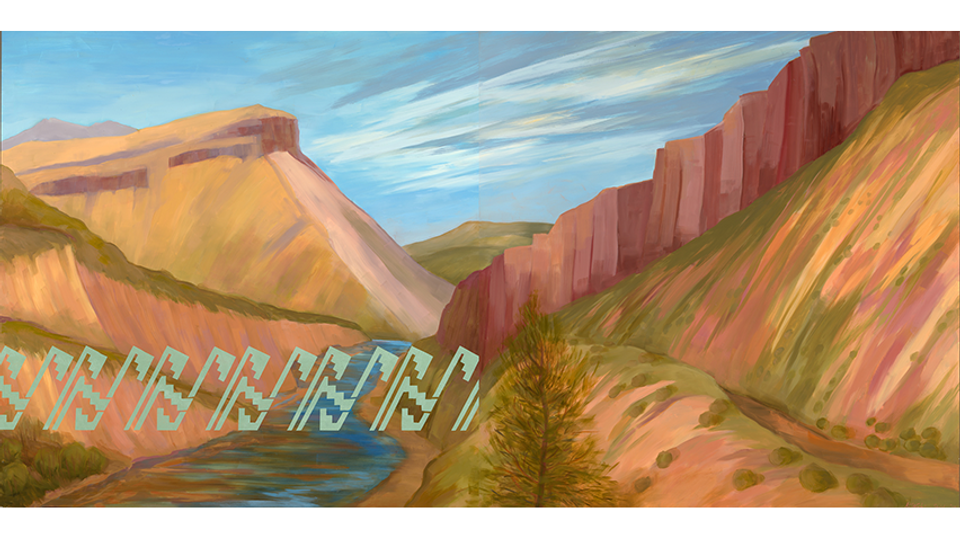Artwork Details
- Title
- Two Women II
- Artist
- Date
- 1973
- Location
- Dimensions
- overall: 42 3⁄8 × 44 1⁄8 in. (107.6 × 112.1 cm)
- Copyright
- © Kay Walkingstick, 2017
- Credit Line
- Museum purchase through the Luisita L. and Franz H. Denghausen Endowment
- Mediums Description
- acrylic on canvas
- Classifications
- Highlights
- Subjects
- Figure group — female
- Object Number
- 2021.30.1
Artwork Description
A Cherokee woman, Kay WalkingStick has been a double trailblazer in American art. She describes this painting as a joyful expression of female self-determination and sensuality. Produced amid the women's movement and the sexual revolution of the 1970s, it offers a rejoinder to the long history of male artists depicting the female nude.
Works by this artist (47 items)
Videos
Take a tour through celebrated Native artist Kay WalkingStick’s long and complex career through a trio of paintings in the Smithsonian American Art Museum’s collection. Learn about the artist’s perspective, influences, and bold artistic voice with Melissa Ho, SAAM’s curator of 20th-century art, who calls WalkingStick “one of the great American painters of our time.” Ho takes a closer look at three works: Two Women II (1973), With Love to Marsden (1995), and Orilla Verde at the Rio Grande (2012). She shares insights into the different phases of WalkingStick’s artistic practice and discusses the artist’s social commentary, which ranges from statements on female autonomy to the Native presence on sacred lands.
This video is part of the Smithsonian American Art Museum's ongoing series American Art Moments. Join a SAAM expert and go beyond the artwork label to discover the untold stories and rich connections represented in some of the museum's most iconic artworks.
Related Posts















